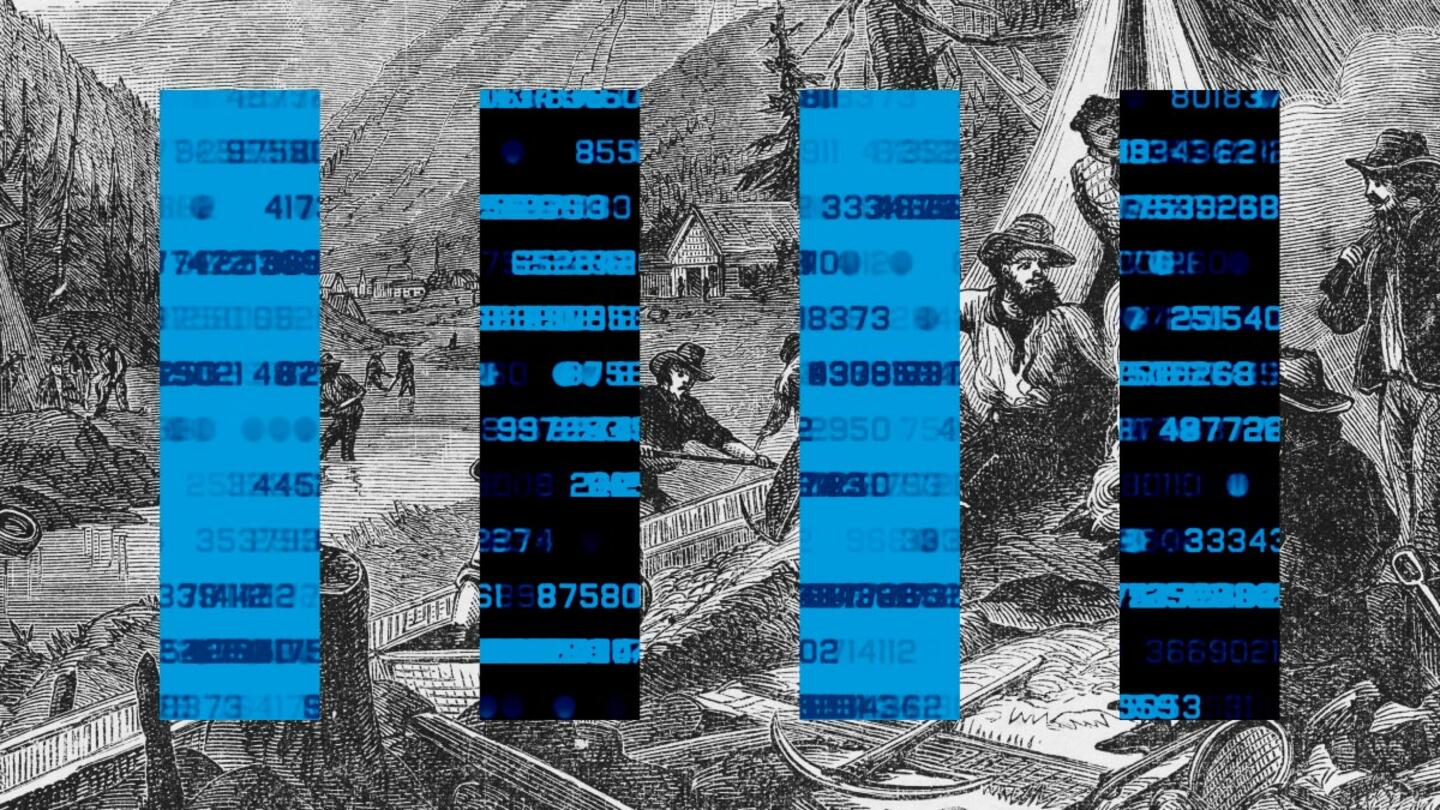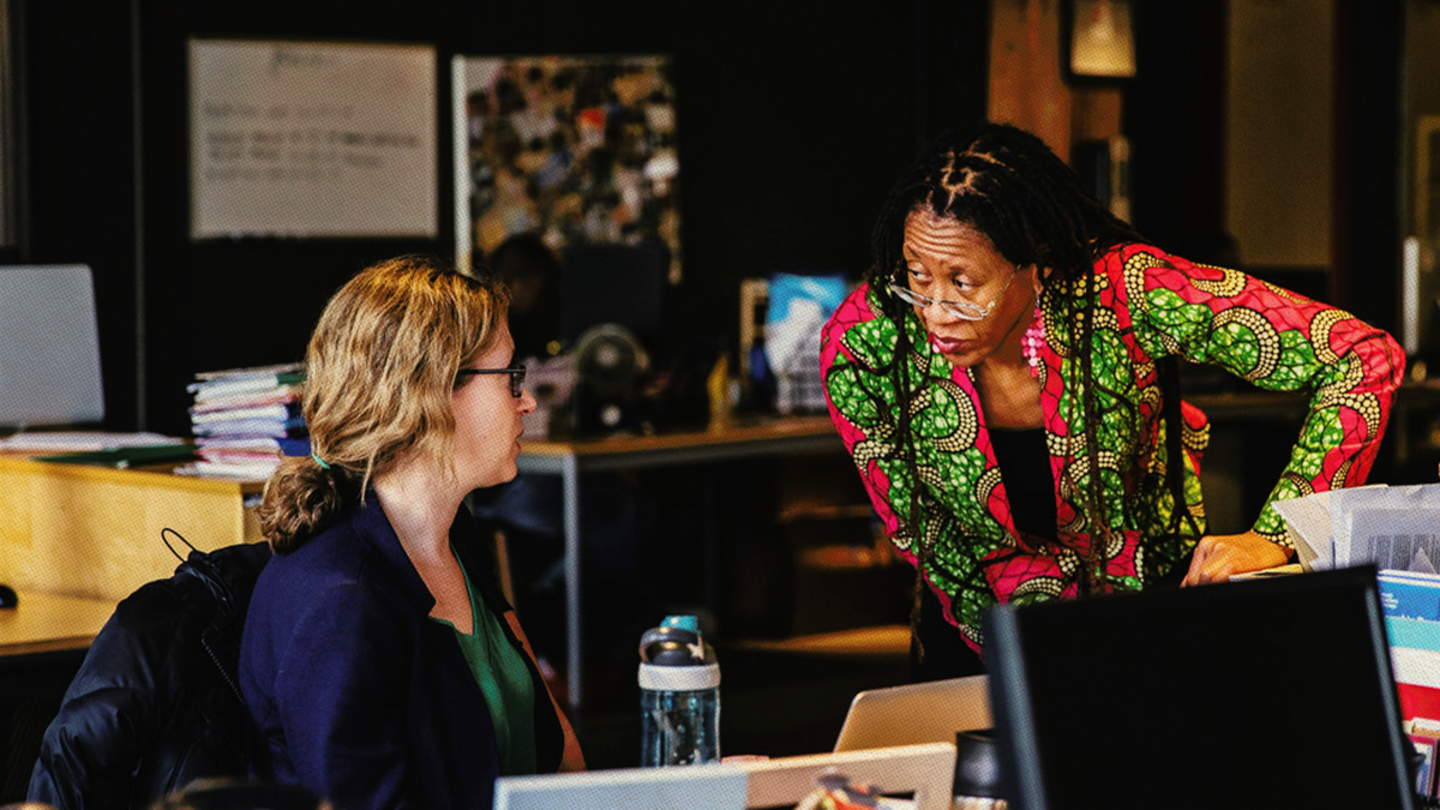Both Stella Mallett, 18, a recent high school graduate, and Madison Cuellar, 17, a senior, have bright futures — and plan very different paths for getting there.
Cuellar plans to major in business at a four-year university, while Mallett will study auto body design at a trade school. Both struggled with finding their path and understanding how they fit into the expectation that a four-year college degree should follow high school.
“Sometimes people are like, ‘Oh, you’re not going to college. You’re going to trade school, that’s weird,’” said Mallett. “I definitely have a path in mind; it’s not just that I don’t want to go to college.”
There’s a common narrative when it comes to high school seniors. It goes something like this: The “college track” means achievement and long-term success. Meanwhile, kids who choose a different path can be viewed as less passionate or ambitious.
This is a limiting narrative, says Roy Spence, founder of the Make It Movement. It leaves students in the dark about high-paying careers in skilled trades. It also contributes to underemployment and a growing labor shortage in vital industries like construction, health care, technology, and energy development.
Spence is a prominent figure in the world of advertising, best known as the co-founder and chairman of GSD&M, a renowned advertising agency based in Austin, Texas. GSD&M has crafted iconic campaigns for major clients such as Southwest Airlines, AT&T, and Walmart, including the legendary “Don’t Mess with Texas” campaign.
Spence founded the Make It Movement to harness marketing as a force for good, believing that connecting young people with meaningful careers benefits both them and the economy. The organization markets high-skill, high-income careers to high schoolers. Many of these careers don’t require four-year degrees — a fact that makes them more obscure and less valuable in the eyes of students and parents.
Spence is trying to change that.
“Let’s respect the dignity of all work,” he said. “Let’s try to find out what kids are good at and let them go their own way.”
The organization recently partnered with Fédération Internationale de l'Automobile, the governing body of global motor sport, to send three students behind the scenes at the Formula 1 U.S. Grand Prix at Austin’s Circuit of the Americas.
The experience opened the students’ eyes to careers in motor sports. We spoke with two of them, Mallett and Cuellar, about the event. Both said it helped them feel more confident in their career paths.
Is it really that simple? Could increasing awareness of career paths that don’t require college meaningfully shift the workforce?
The workforce is like motor sport — wait, what?
For a young high school student, the expectation that college must come after high school can distort their view of available career options. They might approach their search with the skewed perception that noncollege options — often called “alternatives” — are less viable or prestigious.
Think of it like a Formula 1 racing team. Most spectators only see the high-profile aspects of the team — the drivers, cars, and pit crews. They may not know that each F1 team consists of between 300 and 1,200 active team members.
“There were teams and teams of people,” said Cuellar about her behind-the-scenes experience. “I didn’t think about it before because I was just focused on the cars and the racing, but so much goes into motor sports, and there are so many different jobs and fun amazing things to do.”
As the most visible members of the team, drivers are featured in media interviews, promotional events, and fan engagements. Their performance on the track is closely followed by fans and the media. Does that make them more important than the hundreds of other roles on the team?
Positions outside the spotlight aren’t any less essential to the team’s success, but the lack of attention can make them seem less critical or prestigious.
In this way, the workforce is akin to an F1 team. For decades, colleges and the careers they lead to have been the most prominent options presented to high school students, making it difficult to consider alternatives. When students do recognize other career paths, the overwhelming emphasis on college can skew their perceptions, making them believe other roles are less important or less meaningful.
It’s hard for a person to see past what they think they know until they see it up close. Spence said it best: “They don’t even know what’s out there.”
He gave the example of manufacturing as a high-skill, high-income career that doesn’t require college: “Students have no idea what manufacturing is or that if they go into advanced manufacturing, they can work on Formula 1 cars or spaceships.”
Make It Movement is on a mission to inspire and empower middle and high school students to begin exploring their purpose and potential for high-skill, high-income careers while still in school.
The organization works with career and technical education instructors, high school career counselors, and community colleges to broaden and deepen high school students’ perspectives — helping them discover what they’re great at and showing them fulfilling career opportunities that match those talents.
Just as an F1 team composed only of drivers and a pit crew wouldn’t be able to compete, the U.S. economy would fall apart if we only filled the positions that require college degrees.
“I’m not anti-four-year degrees,” said Spence. “I am pro-finding kids’ talents.”
She thought she would have to narrow her passion down to a single set of interests
Cuellar, now a rising senior, spent years believing she had to narrow her focus to a single set of interests, a mindset shaped by the college major mentality that divides careers into distinct paths.
Throughout high school, Cuellar has been involved in her school’s robotics program. She enjoys mechanical engineering and considered studying robotics in college. However, a new role in outreach made her realize a new path.
“We do a lot of student-led pitching and fundraising,” she said.
She discovered that she loves talking to people about technology and sharing her enthusiasm. She started thinking that maybe she wanted to study business.
“I was feeling like I was stuck deciding either business or engineering and that I would be unhappy in either one without the other,” she said.
Her teachers also focused heavily on the math aspect of each path — making her wonder if she was cut out for either one.
“I’m definitely not the highest scorer in math,” she said. “I don’t enjoy math. I can do it, but it’s not my favorite thing. So after being told a bunch of times by engineers or mentors or teachers that math is a really big part of engineering and business, I started to lose confidence.”
Her in-person experience at the U.S. Grand Prix changed everything.
Sign up for Stand Together's Rethinking Work & Learning newsletter to get the latest stories, ideas, and trends on the future of employment.
“It’s taught me that there are so many different places for tech and business to meet in the middle,” she said. “I realized I can have a job that lets me explore both my interests. I loved seeing the engine and everything, but there were also representatives there talking about it who weren’t engineers.”
She saw opportunities to do the things she loved and was good at that didn’t involve a ton of math, as well. “I was just focused on what I can’t do, but I learned that I should look at what I’m good at, instead — which is more applicable to the world,” she said.
Her plan now is to study business at a four-year university, but that doesn’t mean she’s abandoning her love for technology.
“I only look for jobs and internships now that combine both business and technology,” she said. “I love the combination now that I’ve found it.”
‘I felt like I was settling.’
Mallett doesn’t think she could do an office job, but she grew up thinking that was the expectation.
“For the longest time, I felt like I was just settling for whatever wouldn’t absolutely drive me insane,” she said.
When she got her driver’s license, she discovered a love for cars. “I feel like the only reason I wasn’t into cars sooner is because when I was a kid, it wasn’t presented in a feminine way.”
At 16, she loved taking care of her car. “It was one of the ways I would de-stress,” she said. “I would go and wash the car and make it look brand new again, and then after a while, it was kind of like, maybe I can make money off of this.”
She began a car detailing business, teaching herself everything she could about detailing and auto body work.
“I was just obsessed with trying to know as much about it as possible as fast as possible,” she said. “Once I kind of got to a point where it felt like I had gotten all I could out of online videos or reading, I started going to shops and introducing myself, then going into body shops and asking questions.”
She has found her passion — one that doesn’t require a four-year college degree to pursue but gives her a tremendous sense of satisfaction. Her ultimate goal is to open her own body design shop. She just wants to be surrounded by cars.
“I feel like I’ll never work a day in my life,” she said. “It’s never boring. It’s never the same thing over and over again, and there’s always something more to learn. It’s just fun. I mean, yes, I make a lot of money off of it, which is obviously a huge plus, but it never feels like I’m having to sacrifice my mental well-being.”
Going to the U.S. Grand Prix event confirmed her chosen path.
“That was the first time I saw race cars and every person’s role and every piece of the puzzle,” she said. “It was just so eye-opening. Seeing that to the extent that it was happening in front of me was just incredible.”
She will attend a two-year trade school program at her local community college. “It’s not the most conventional path, especially for a girl,” she said. “Basically, I’ll get all of my certifications for auto body work via my trade school and also any certifications that I would need, whether that’s welding or painting — any kind of automotive cosmetic certifications that exist.”
“After that, it’s really just where I build it and where I take it.”
She believes that while college is heavily promoted as the most socially acceptable path, it’s not for everyone.
For her, the right path is in front of her. “I’ve worked on Porsches, Ferraris, and McLarens — these incredible full-blown race cars. Whenever I finish those cars, and the clients are happy with my work and want to book me again, I just feel like it’s a win-win all around. There’s no mental drain.”
“It’s like, oh my goodness, I just got a great experience, and I got paid for it.”
Make It Movement is supported by the Charles Koch Foundation, which as part of the Stand Together community funds cutting-edge research and helps expand postsecondary educational options.
Learn more about Stand Together’s efforts to transform the future of work and explore ways you can partner with us.

Why AI may help more people achieve the American Dream.

Data centers are at the forefront of the ‘new economy.’ But what exactly are they?

Here’s how to bridge the disconnect between employers and employees.

Lessons learned from Colorado.
